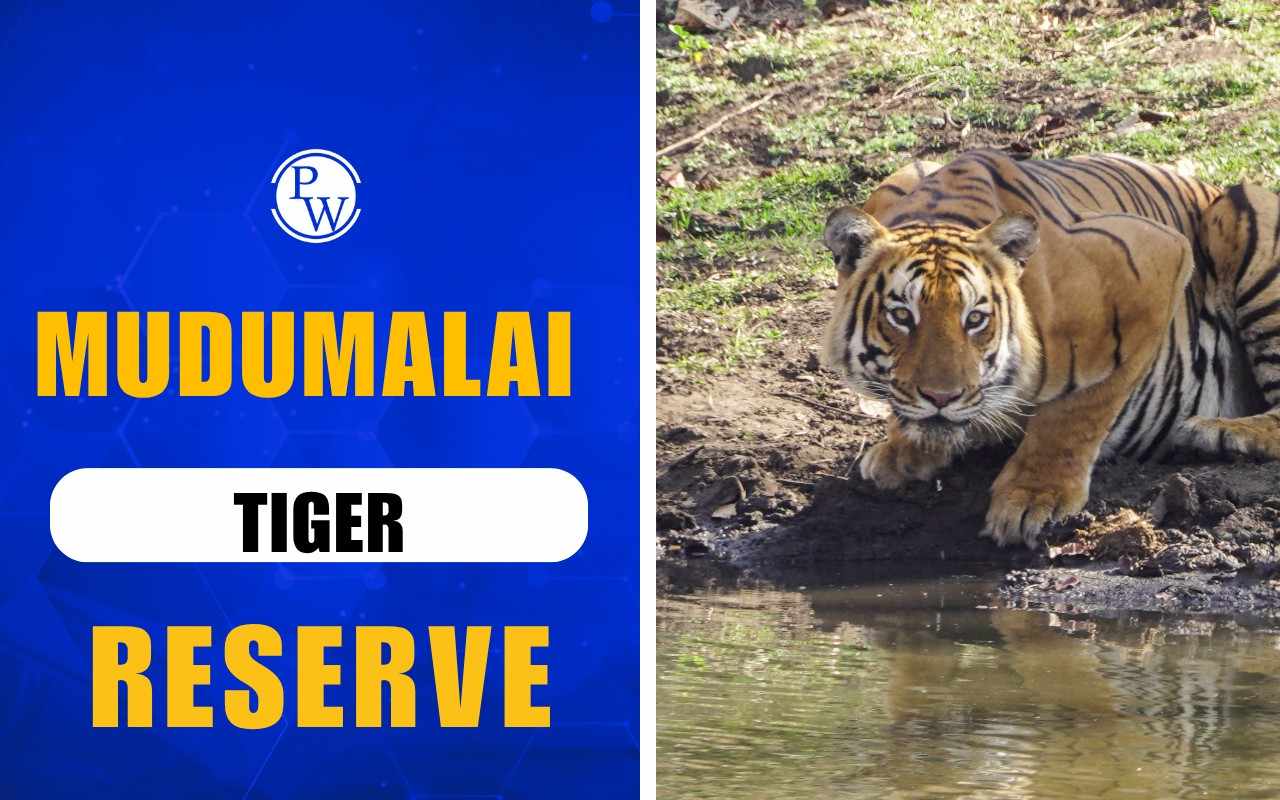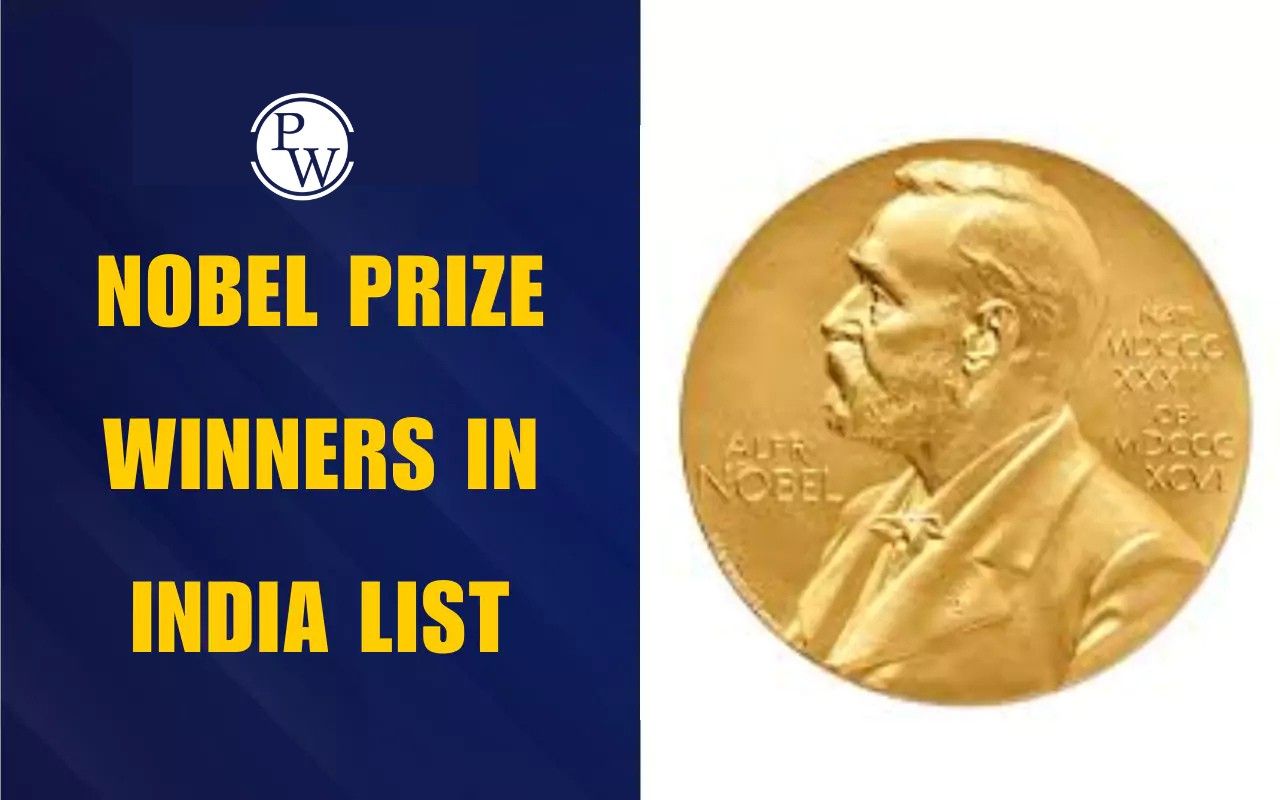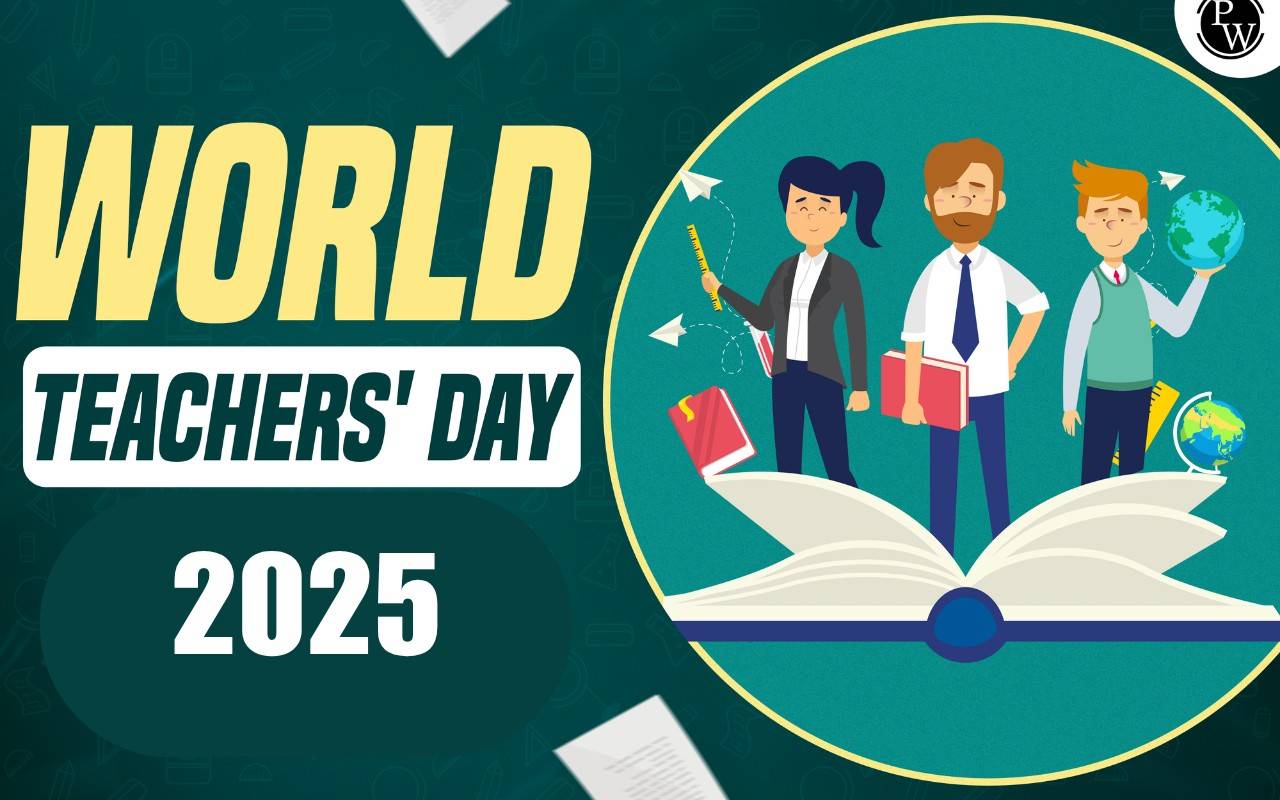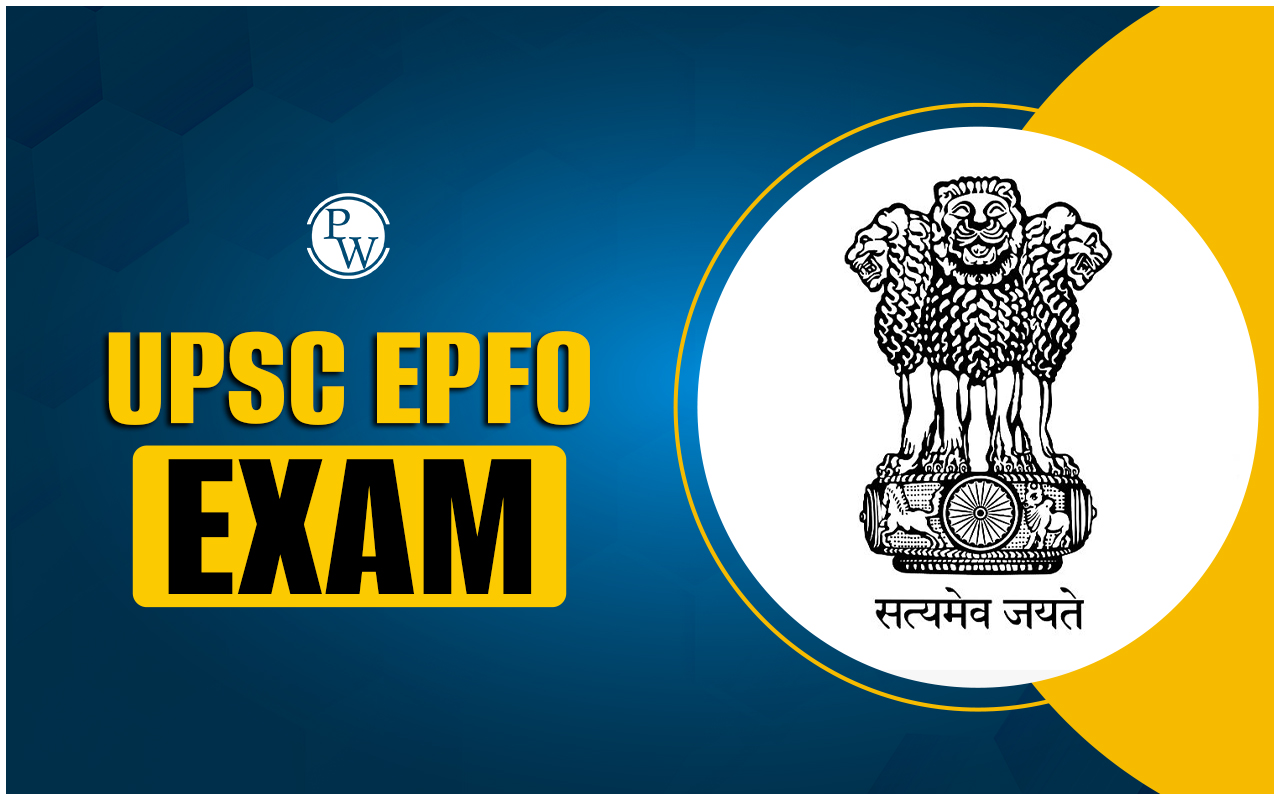
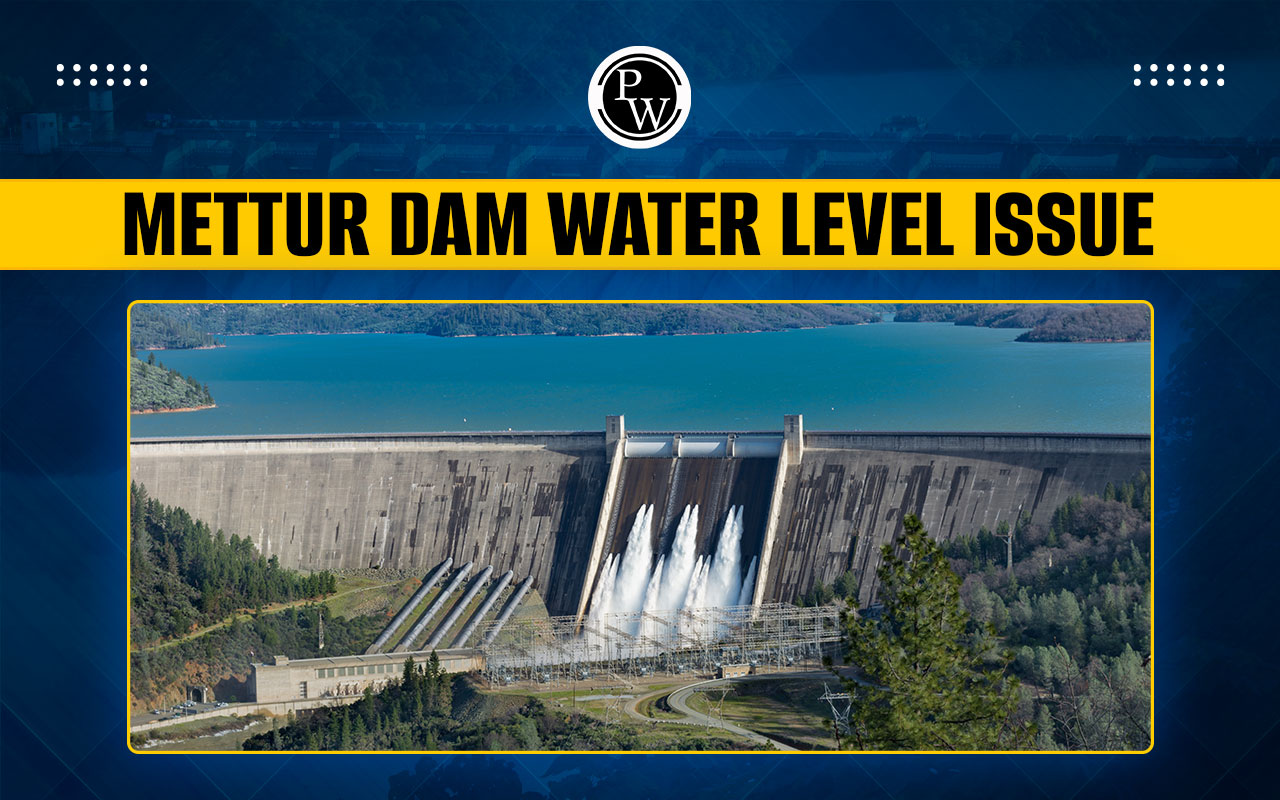
Mettur Dam water level issue gained the spotlight once again as the Water Resources Department (WRD) at Mettur Dam warned 12 districts about the possible flood. The Mettur Dam Water Level Issue is a critical concern, significantly impacting agriculture, drinking water supply, and inter-state relations.
The Mettur Dam, located on the Cauvery River, plays a crucial role in managing water resources. However, fluctuating water levels have led to disputes and challenges at one of the largest dams in India. Find out the current status, consequences, and historical context of this pressing Mettur Dam water level issue.Mettur Dam History
Mettur Dam is located in the Salem district of Tamil Nadu. It was constructed in 1934 across the Kaveri River after Vincent Hart initiated the project in 1924. It is known as one of the largest dams in the country. The dam serves multiple purposes, including irrigation, hydroelectric power generation, and flood control. It plays a crucial role in supporting agriculture in the delta region, particularly in the Thanjavur district, and has become a vital water resource for the state.| About Mettur Dam | |
| Feature | Details |
| Location | Mettur, Salem District, Tamil Nadu |
| Construction Start | July 20, 1925 |
| Completion Date | August 21, 1934 |
| Length | 1,700 meters |
| Height | 214 feet |
| Reservoir | Stanley Reservoir |
| Capacity | 93.4 TMC ft |
| Irrigation Area | 271,000 acres |
| Hydroelectric Power | 240 MW (Mettur hydroelectric and Thermal power plant) |
| Significance | Major irrigation and power source |
What is the Mettur Dam Water Level Issue?
The Mettur Dam Water Level Issue arises from the fluctuations in water storage at the Mettur Dam, located in Salem district, Tamil Nadu. These fluctuations are influenced by monsoon patterns, upstream water usage, and inter-state agreements, particularly with Karnataka. Built in 1934, the Mettur Dam is a key irrigation and drinking water source that faces challenges when water levels either rise excessively or fall significantly, impacting millions of people relying on its resources. Recently, the dam water reached 120.1 feet, sending alarming signs among people living nearby.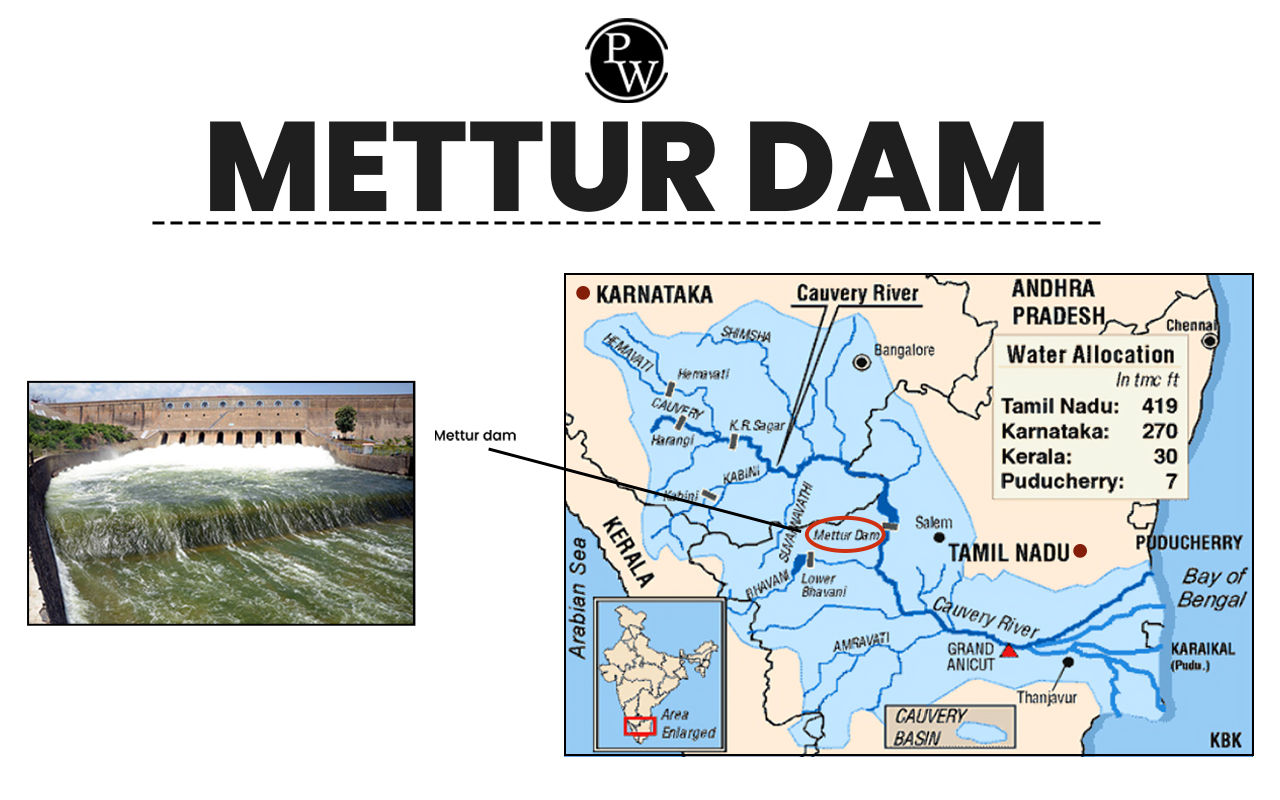 The Mettur Dam Water Level Issue has garnered significant attention due to its implications for agriculture, water management, and regional politics. Understanding the Mettur Dam water level issue is essential for UPSC aspirants, as it encompasses environmental, social, and governance dimensions.
The Mettur Dam Water Level Issue has garnered significant attention due to its implications for agriculture, water management, and regional politics. Understanding the Mettur Dam water level issue is essential for UPSC aspirants, as it encompasses environmental, social, and governance dimensions.
Current Status of Mettur Dam Water Level
Currently, the water level in the Mettur Dam stands at around 120 feet , which is equivalent to its water storage capacity on its height scale. This rising water level raises concerns as surplus water will be released through the Cauvery River, affecting people who are living in low-lying areas and near banks. Over the years, the Mettur Dam water level issue has been a point of concern due to erratic monsoon rains and varying water release from upstream dams in Karnataka. In summer this water level is usually on the lower side impacting farmers and the availability of water for Tamil Nadu. The water level needs constant monitoring to ensure it remains within safe limits to prevent flooding or water scarcity.Mettur Dam Dispute and Cauvery Pact
The Mettur Dam Water Level Issue is closely linked to the longstanding Cauvery water dispute between Tamil Nadu and Karnataka. There have been two agreements to resolve the dispute and outline water-sharing terms in 1892 and 1924 between the Madras Presidency and the princely state of Mysore. However, the issue persisted with state governments unable to come to a common ground. To resolve the matter, the government constituted the Cauvery Water Disputes Tribunal (CWDT) in 1990 to adjudicate the water dispute between the states of Tamil Nadu, Karnataka, Kerala, and Puducherry. Later, in 2018 the Supreme Court of India declared the Cauvery River a national resource upholding water-sharing arrangements passed by the tribunal.
Cauvery Water Disputes Tribunal (CWDT):
|
Consequences of Rising Water Level in Mettur Dam
The Mettur Dam Water Level Issue poses a dual challenge requiring careful monitoring and management to balance water supply and flood risks. On one side the water level should be adequate to meet the hydroelectric power general and irrigation demand and on the other side, a rise beyond capacity poses a threat to lives. The rising water level in the Mettur Dam can have several consequences:- Flooding: High water levels can lead to the overflow of the dam, causing flooding in downstream areas, displacing communities, and damaging crops.
- Agricultural Impact: Excessive water release can inundate farmlands, ruining crops and affecting the livelihood of farmers.
- Infrastructure Damage: Floodwaters can damage infrastructure, including roads, bridges, and buildings, necessitating extensive repair efforts.
- Public Safety: High water levels pose a significant risk to public safety, requiring evacuations and emergency responses to protect lives and property.
| UPSC Related Articles | ||
| Electoral Bonds | IAS Officer After 12th | Newspaper for UPSC Exam |
| UPSC Mains Syllabus | Pratigya Diwas 2024 | UPSC Prelims |
Mettur Dam Water Level Issue FAQs
What is the current water level of Mettur Dam?
As of August, 2024, the current water level of Mettur Dam is approximately 120.1 feet.
What is the old name for Mettur Dam?
The old name for Mettur Dam is Stanley Reservoir.
Mettur Dam is built on which river?
Mettur Dam is built on the Cauvery River.
Which states are affected by the Mettur Dam water level issue?
The Mettur Dam water level issue primarily affects Tamil Nadu and Karnataka.
Which is the source of water for Mettur Dam?
The source of water for Mettur Dam is the Cauvery River, along with its tributaries. It also receives inflows from Kabini Dam and Krishna Raja Sagara Dams located in Karnataka.
Talk to a counsellorHave doubts? Our support team will be happy to assist you!

Check out these Related Articles
Free Learning Resources
PW Books
Notes (Class 10-12)
PW Study Materials
Notes (Class 6-9)
Ncert Solutions
Govt Exams
Class 6th to 12th Online Courses
Govt Job Exams Courses
UPSC Coaching
Defence Exam Coaching
Gate Exam Coaching
Other Exams
Know about Physics Wallah
Physics Wallah is an Indian edtech platform that provides accessible & comprehensive learning experiences to students from Class 6th to postgraduate level. We also provide extensive NCERT solutions, sample paper, NEET, JEE Mains, BITSAT previous year papers & more such resources to students. Physics Wallah also caters to over 3.5 million registered students and over 78 lakh+ Youtube subscribers with 4.8 rating on its app.
We Stand Out because
We provide students with intensive courses with India’s qualified & experienced faculties & mentors. PW strives to make the learning experience comprehensive and accessible for students of all sections of society. We believe in empowering every single student who couldn't dream of a good career in engineering and medical field earlier.
Our Key Focus Areas
Physics Wallah's main focus is to make the learning experience as economical as possible for all students. With our affordable courses like Lakshya, Udaan and Arjuna and many others, we have been able to provide a platform for lakhs of aspirants. From providing Chemistry, Maths, Physics formula to giving e-books of eminent authors like RD Sharma, RS Aggarwal and Lakhmir Singh, PW focuses on every single student's need for preparation.
What Makes Us Different
Physics Wallah strives to develop a comprehensive pedagogical structure for students, where they get a state-of-the-art learning experience with study material and resources. Apart from catering students preparing for JEE Mains and NEET, PW also provides study material for each state board like Uttar Pradesh, Bihar, and others
Copyright © 2025 Physicswallah Limited All rights reserved.



